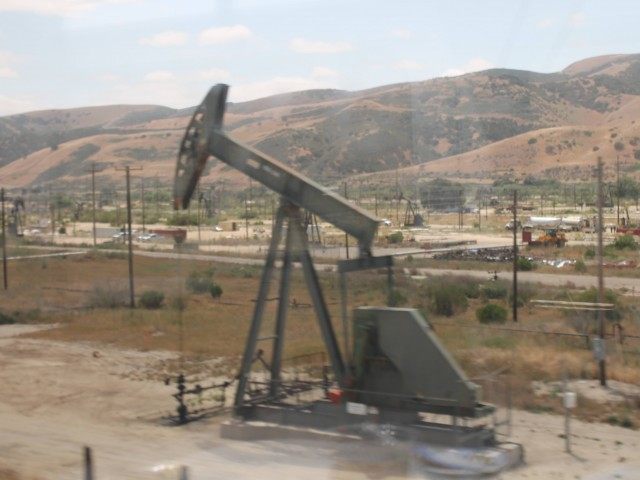U.S. economic growth stalled out in the first quarter of 2015 as the domestic energy boom caused a short-term collapse in capital spending, large lay-offs in the oil industry, and a 15 percent jump in the exchange rate of the US dollar. A pattern of slowing GDP just before a consumer spending boom takes off is consistent with what happened the last time a big rise in U.S. crude oil production tanked gasoline prices beginning in 1986.
The U.S. economy stalled to +0.2% seasonally adjusted growth rate in the first three months of 2015. That was compared to a 2014 growth of +2.2% in the fourth quarter, down from a ripping +5% in the third quarter, according to the Commerce Department. The only sectors where spending jumped in the first quarter were a stunning $25 billion rise in mandatory healthcare spending due to Obamacare, and the housing and utilities cost rise of $23 billion due to extraordinarily higher home heating costs. These jumps in cost tended to cancel out some of the 40 percent crash in crude oil prices that are now saving American consumers about $630 million a day, or $240 billion per year.
At the start of this year, according to Lombard Street Research (LSR), most economists were hoping 2015 would be a break-out year for the U.S. economy, “with growth finally pulling away” from the worst post-recession economic recovery since the Great Depression. Wall Street’s consensus growth expectations for 2015 were +3 percent, substantially above the +2 percent average since 2009.
But LSR points out, “The US economy is experiencing a familiar seasonal pattern, with activity slowing in early 2015,” and growth expected to pick up in the second half of the year. The Atlanta Federal Reserve’s latest GDP tracking estimates had fallen from +3 percent growth in early January to zero growth by mid-March. This pattern of poor first-half growth and then a strong second half has been a regular U.S. feature since 2009.
When oil prices plunged last year, there was a debate among economists about whether that was good or bad news for the economy. Macro-economic models, based on historical experiences, showed it would provide a significant boost to GDP.
The last time the U.S. had a fall in imported energy due to a jump in domestic production was late 1985, when the price of oil collapsed quickly from $66 per barrel to $25 per barrel, and then trended down to $17 over the next 13 years.
That collapse of oil prices lit up one of the greatest economic booms in American history, with growth averaging about 4 percent compounded for the next 15 years. But the domestic supply-induced crash in oil prices caused the U.S. economy to hit a similar “soft patch” in the first half of 1986.
The current surge in the dollar is directly correlated with America regaining its world dominance in oil and natural gas production. Despite the international “Brent” price of crude oil falling to the current $66.37, the domestic West Texas Intermediate crude oil price is currently at a $7.30 discount to the Brent price due to excess domestic supply.
Prior to the current oil boom, huge amounts of cash were flowing out of the U.S. every day to buy crude oil from the Middle East, Venezuela and Indonesia. Much of that cash is now staying at home, and huge amounts of international investment dollars are flowing into the US and driving up the exchange rate of the U.S. dollar. That short-term dollar strength is depressing American manufacturing competitiveness and hurting American corporate profits.
U.S energy suppliers have drastically cut capital spending, with the Baker Hughes rig count down over 40 percent, about equal to the crash during the Global Financial Crisis.
LSR expects that “over time, the negative impact of the strong dollar should fade and low oil prices will become a net positive for the economy, with households spending out of higher real incomes.”
LSR believes that just like in early 1986, consumers in early 2015 have been banking their gasoline savings. But once they are confident that gasoline prices will stay down, America could be teed-up for an epic consumer spending spree, like the one that began in mid-1986 and lasted until the dot-com bubble burst in 2001.

COMMENTS
Please let us know if you're having issues with commenting.